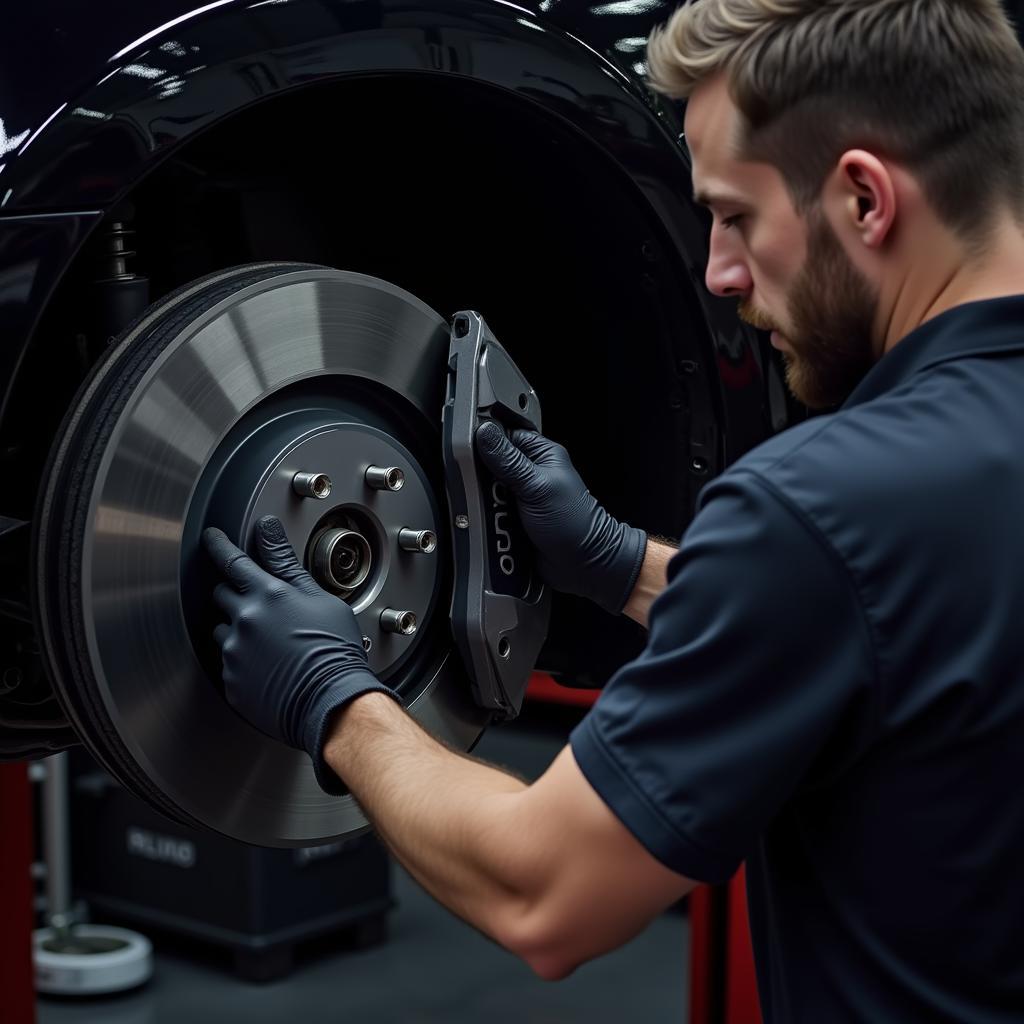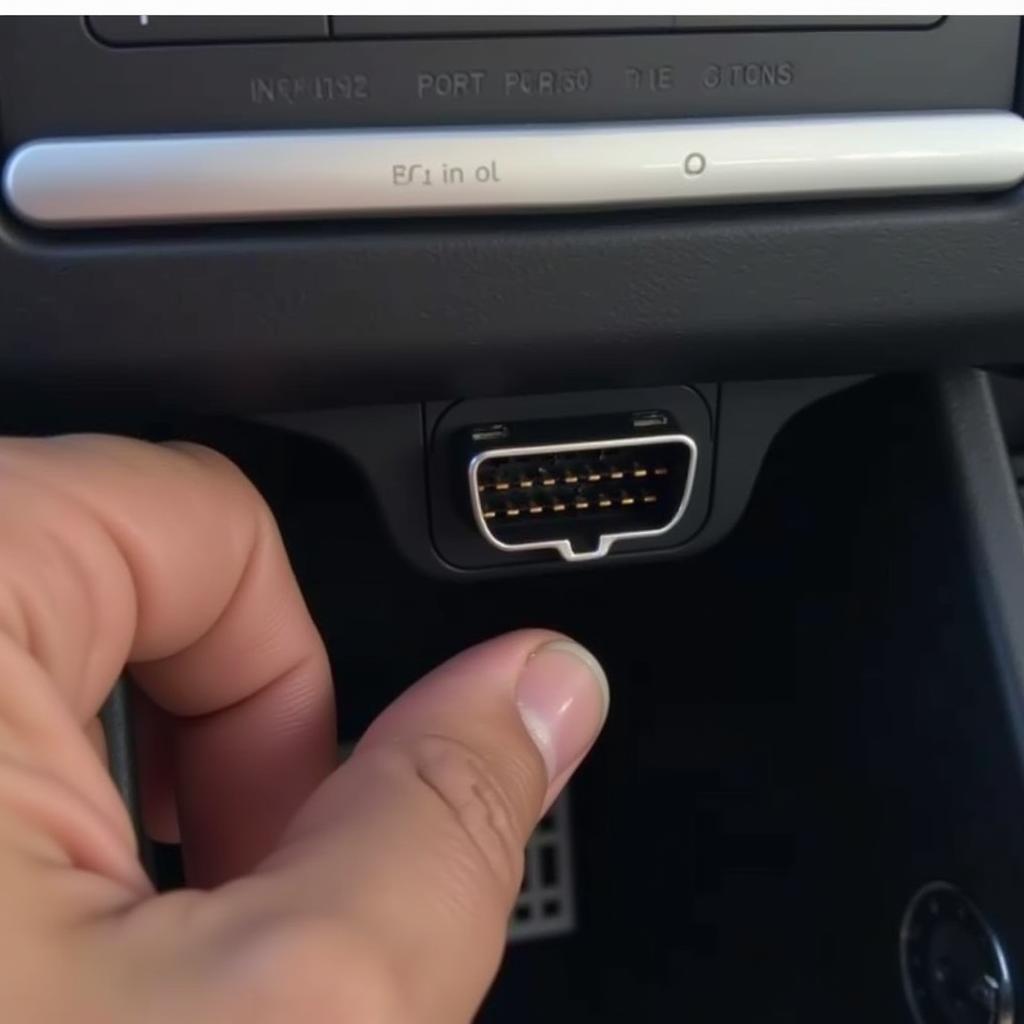So, your Audi’s brake pad warning light has reared its head. This little indicator is telling you it’s time to pay attention to your brakes. But how urgent is it? How long can you drive with the brake pad warning light on in your Audi?
This article will cover everything you need to know about your Audi’s brake pad warning light, including what it means, what to do, and how long you can drive before it becomes a safety issue.
Understanding Your Audi’s Brake Pad Warning Light
Let’s start with the basics. Your Audi is engineered with a sophisticated system that monitors the condition of your brake pads. A sensor within the brake pad assembly keeps track of the pad’s thickness. When the pad wears down to a predetermined level, this sensor triggers the warning light on your dashboard.
This warning light is your cue that your brake pads need attention soon. It’s crucial not to ignore this warning as it directly relates to your safety on the road.
How Long Can You Drive With the Brake Pad Warning Light On?
While it’s not advisable to drive with your brake pad warning light on, you may have some time before needing to schedule an immediate replacement.
As a general rule of thumb, you can expect to drive between 500 to 1,000 miles (800 – 1,600 km) after the brake pad warning light illuminates.
However, this is just an estimate. Several factors can significantly impact this timeframe:
- Driving Style: Aggressive braking habits will wear down your brake pads much faster than smooth, gradual braking.
- Driving Conditions: Frequent city driving with lots of stopping and starting puts more strain on your brakes compared to highway driving.
- Brake Pad Quality: Higher quality brake pads are designed to last longer and withstand greater wear and tear.
Expert Insight:
“Many drivers underestimate the impact their driving style has on brake pad wear,” says Mark Schmidt, a senior automotive technician with over 20 years of experience. “If you’re constantly slamming on your brakes, you’re going to wear them down much faster. It’s like constantly stomping on your shoe; eventually, the sole is going to wear out.”
What Happens if You Ignore the Brake Pad Warning Light?
Ignoring the brake pad warning light can lead to serious consequences:
- Reduced Braking Efficiency: Worn-down brake pads can’t grip the brake rotors effectively, increasing your stopping distance and potentially causing an accident.
- Damage to Brake Rotors: Driving with worn brake pads can damage your brake rotors, leading to costly repairs.
- Complete Brake Failure: In extreme cases, ignoring the warning light can lead to complete brake failure, putting you and others on the road at serious risk.
What to Do When Your Audi’s Brake Pad Warning Light Comes On
When your Audi’s brake pad warning light comes on, here’s what you should do:
-
Assess Your Driving: Have you been braking harder than usual? Have you been driving primarily in stop-and-go traffic? Understanding your driving habits can give you a better idea of how quickly your brake pads are wearing down.
-
Check Your Brake Pads: If you’re comfortable with basic car maintenance, you can visually inspect your brake pads. You’ll see them through the spaces between the spokes of your wheels. Look for a significant difference in thickness between the brake pad and the metal backing plate.
-
Schedule an Inspection: If you’re unsure about the condition of your brake pads or notice any signs of wear, it’s crucial to schedule an inspection with a qualified mechanic specializing in Audi vehicles. They can assess the situation and advise on the best course of action.
 Mechanic inspecting Audi brake pads during a routine maintenance check
Mechanic inspecting Audi brake pads during a routine maintenance check
- Don’t Delay Replacement: Once a mechanic has confirmed that your brake pads need replacement, it’s crucial to do so promptly. Don’t put off this essential safety maintenance.
FAQs About Audi Brake Pad Warning Lights
Here are some frequently asked questions about Audi brake pad warning lights:
1. Can I reset the brake pad warning light myself?
While it’s technically possible to reset the light, it’s not recommended unless you’ve replaced the brake pads. The light is a safety feature, and resetting it without addressing the underlying issue could be dangerous.
2. How much does it cost to replace Audi brake pads?
The cost of brake pad replacement varies depending on your Audi model, the type of brake pads used, and labor costs in your area. However, you can typically expect to pay between $300 and $700 for a complete brake pad replacement.
3. How often should I replace my Audi’s brake pads?
Audi recommends replacing your brake pads every 20,000 to 70,000 miles, depending on driving conditions and habits.
4. What are the signs of worn brake pads besides the warning light?
Other signs of worn brake pads include squealing or grinding noises when braking, vibrations in the brake pedal, and a longer stopping distance.
5. Can I replace just the brake pads, or do the rotors need to be replaced too?
If your rotors are in good condition, you may be able to replace just the brake pads. However, if your rotors are warped or damaged, they will also need to be replaced.
6. What type of brake pads are best for my Audi?
The best type of brake pads for your Audi will depend on your driving style and needs. Talk to your mechanic about the different types of brake pads available and which ones would be best suited for you.
Conclusion
Your Audi’s brake pad warning light is a crucial safety feature that should never be ignored. While you may have some time to drive before needing immediate replacement, it’s best to err on the side of caution and schedule an inspection as soon as possible. Remember, timely brake pad replacement ensures optimal braking performance and, most importantly, keeps you and others safe on the road.
Don’t wait until it’s too late. If your Audi’s brake pad warning light is on, get it checked out by a qualified professional today!

